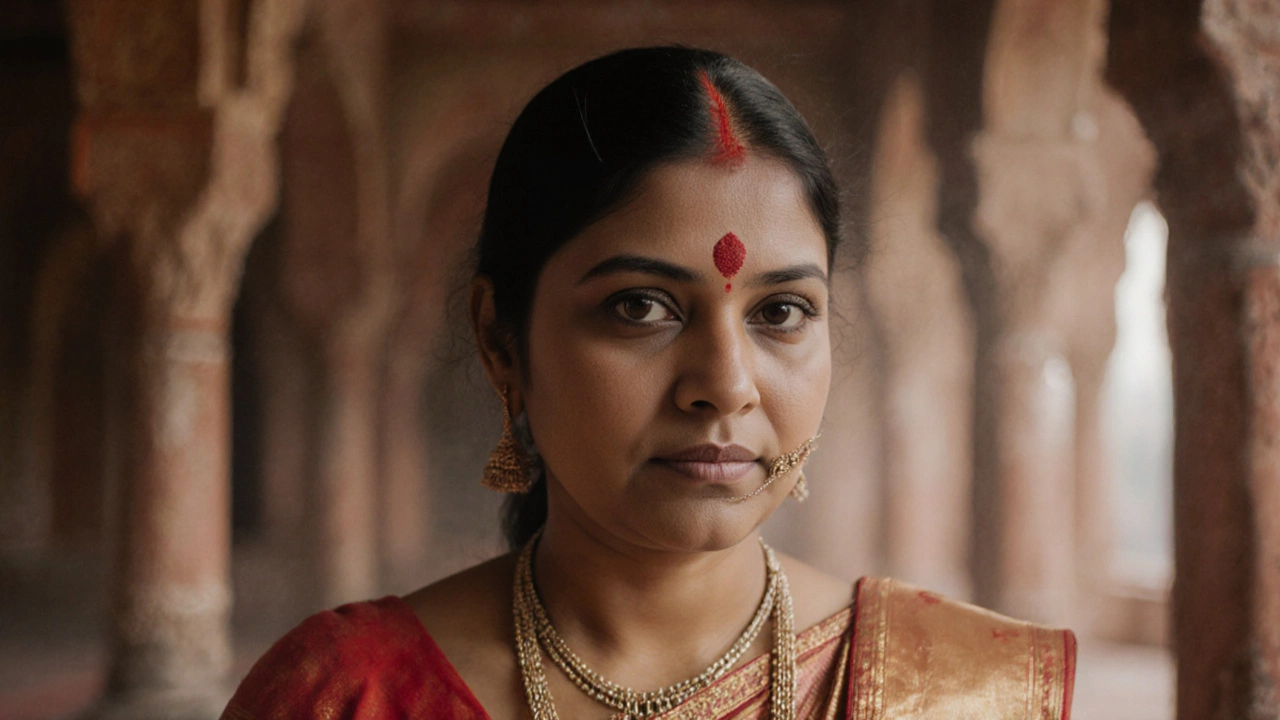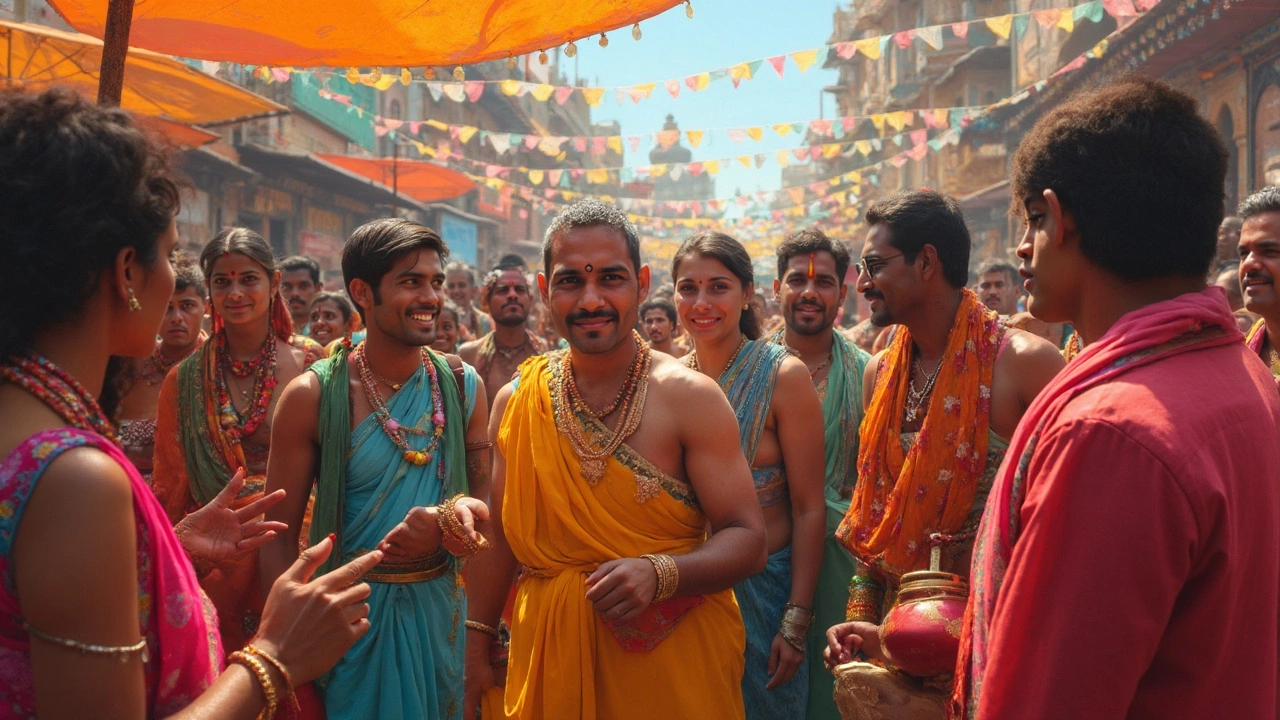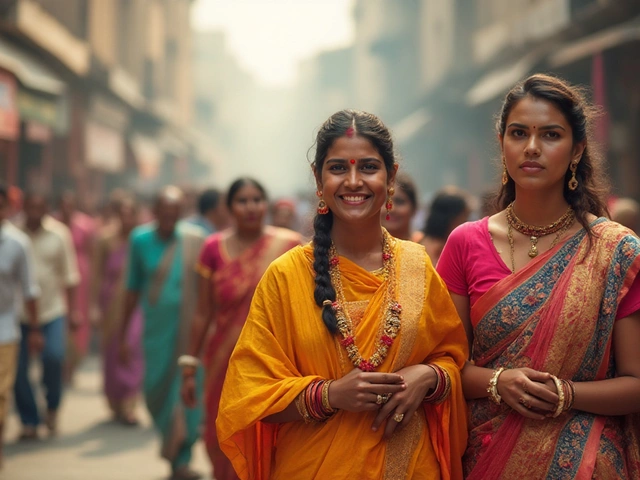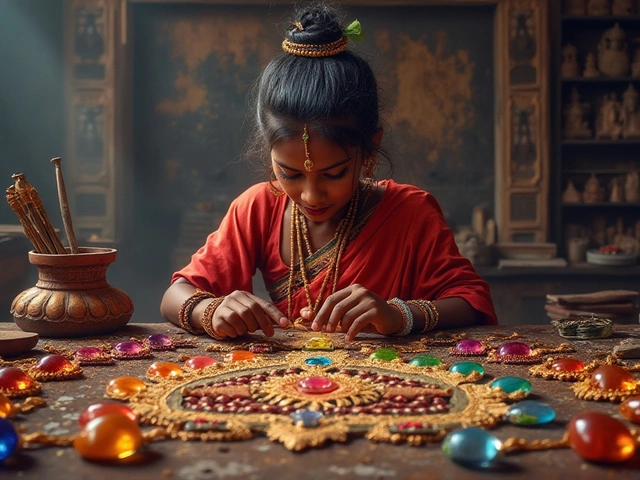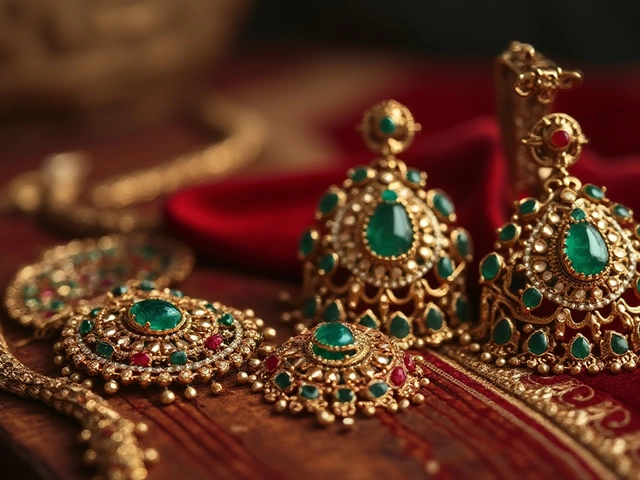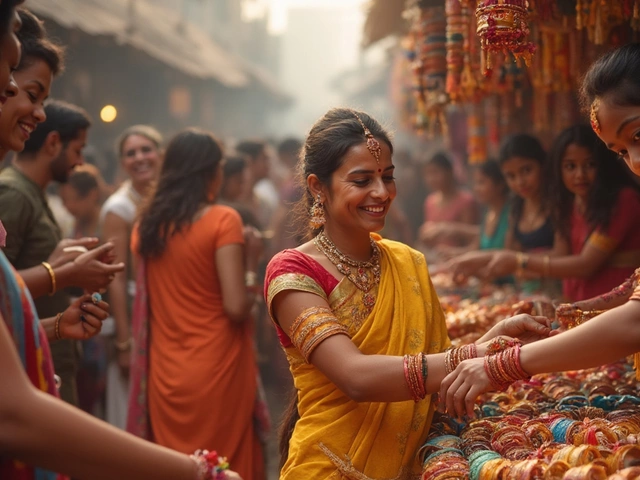Bindi Meaning: Symbolism, History and Modern Tips
Ever wondered why many Indian women wear that small dot on their forehead? The bindi isn’t just a fashion statement – it has deep cultural roots that go back centuries. In this guide we’ll break down what the bindi stands for, where it came from, and how you can wear it in a way that feels right for you.
Where the Bindi Comes From
The word “bindi” comes from the Sanskrit ‘bindu’, meaning a point or drop. Ancient texts link it to the third eye – the spot between the eyebrows that’s said to be the gateway to inner wisdom. In Hindu tradition the spot is called the Ajna chakra, and placing a bindi there is thought to help focus the mind during prayer or meditation.
Historically, bindis were made from red vermilion powder (kumkum) because red is associated with power and fertility. Over time, different regions added their own twists. In South India you’ll see larger, rounder bindis made from sandalwood paste, while in the North a tiny red dot is more common. Some communities use white rice paste or even gold foil for special occasions.
The bindi also carries social signals. A married woman traditionally wears a red bindi to show she’s taken, while an unmarried girl might choose a different color or leave it off. Today many people ignore those rules and treat the bindi as a style accessory.
Choosing & Wearing a Bindi Today
If you’re buying a bindi, start with the occasion. For daily wear a simple stick‑on or gel bindi works well – it sticks without pain and lasts all day. For weddings or festivals pick something with gems, sequins or tiny beads; these add sparkle without hurting the skin.
Match the bindi to your outfit’s color palette. A red bindi pairs nicely with gold jewelry and traditional sarees, while a black or navy dot looks sharp with modern western dresses. You don’t have to stick to one color – try a small floral design if you want a playful vibe.
Application is easy. Clean the forehead with a cotton pad, place a tiny drop of skin‑friendly glue if you’re using a fabric bindi, then press gently. Make sure the dot sits right over the center of the eyebrows for the classic look.
Feel free to experiment. Some people wear double bindis, one on each side of the forehead, for a trendy twist. Others layer a tiny jewel on top of a plain dot for extra shine. The key is to have fun and keep it comfortable.
Whether you’re honoring a tradition or just adding a pop of color, the bindi can be a meaningful or simply stylish addition to your look. Explore the range at RH Jewellers – they offer a mix of classic red bindis, jeweled pieces, and modern designs that fit any budget.
Who Can Wear a Bindi? Meaning, Rules & Modern Styling Tips
Discover who can wear a bindi, its cultural meaning, etiquette, and modern styling tips for any occasion.
Can Christians Wear Bindi?
The question of whether Christians can wear a bindi often surfaces at the intersection of cultural expression and religious identity. While the bindi holds significant cultural and religious meaning in Indian culture, many now wear it as a fashion statement. This article explores the bindi's origins, its significance, and how it fits into modern, multicultural wardrobes, particularly for Christians. Understanding these elements helps navigate the blend of personal expression and respect for tradition.
